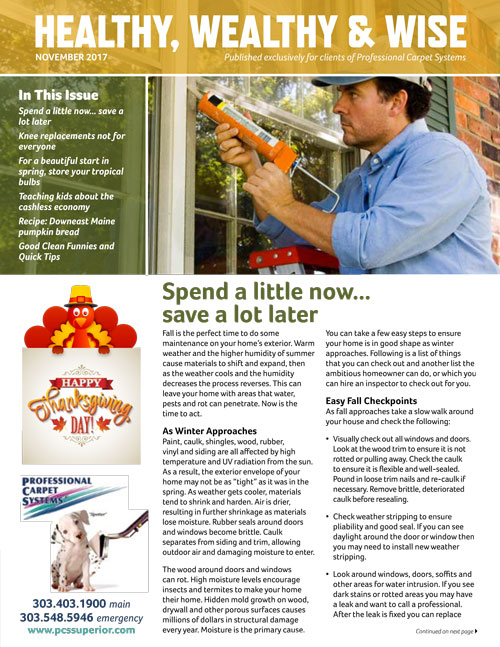Here’s our August 2018 client newsletter.
Click Here to see the full newsletter
Deodorization After a Disaster…
How the pros do it
Whether we are dealing with property damage from water intrusion, storms or fires, odors can become a problem if not handled correctly. Unpleasant odors are sometimes an indication of a potentially infectious, hazardous or unsanitary condition. Bad odors can also cause psychological or emotional stress and even physical discomfort. Lingering odors may be an indication that there was unseen damage that must be addressed. As professionals, we have not done our job unless odors are effectively eliminated to the fullest extent possible.
Spraying deodorants and perfumes simply masks odors temporarily. Odor masking is not effective for long-term deodorizing success. Effectively eliminating odors requires an understanding of the principles of deodorization. The type of odor neutralizer and application process must be chosen based on the source of the odor, type of materials affected and the degree of odor penetration. To avoid a recurrence of the malodor, we use the following 4 step procedure:
Step 1: Find and remove the source. Odor is an effect. Since every effect has a cause, our first challenge is to find and remove the cause. Imagine there is a carcass of a rodent inside your wall. In order to get rid of the odor, we have to find and dispose of the carcass. If the odor comes smoke, we must try to find the location of any burned or charred material and remove it. If the odor is from a water intrusion, say from a broken pipe, we must first dry the structure before we can treat any remaining odor. The same applies to odors from sewage, and mold. The source must be removed or neutralized before proceeding.
Step 2: Clean the affected area to remove any remaining odor-causing residue. We start cleaning in the source area and work outward until all residues are removed. Residues can be sticky or oily residues, crystallized materials or dust and soot. The type of residue and the material you are cleaning determines the cleaning method. For instance, removing soot from a brick wall requires different cleaning agents, tools and techniques than removing soot from silk drapes. Depending on the odor, source removal and meticulous cleaning may be all that is required. If not, we move on to the next step.
Step 3: Recreate the conditions of penetration. Recreate the conditions of penetration. This is where specialized equipment is often required. For example, if the odor is from smoke, it may have penetrated into wood, fabrics, drywall and many other porous and semi-porous materials. Any deodorizing products we use must penetrate the materials in the same manner as the smoke odor penetrated in order to neutralize the odors.
If odors have migrated into areas that are inaccessible, it may be necessary to use specialized fogging equipment, electronic oxidation, or dry vapor equipment. Generally, odors caused by mold and sewage will require the removal of porous non-structural materials such as drywall. This may be followed up by the application of a disinfectant solution to the remaining structural materials. In most cases, properly applying steps 1 through 3 will achieve the desired results. If there is still an odor, we proceed to step 4.
Step 4: Seal the affected material. Sometimes odors penetrate into materials to the degree that it is impossible or impractical to remove them completely. In these situations, it is necessary to apply a topical sealant to encapsulate the odor causing molecules and prevent them from evaporating into the air. If the molecules can’t reach your nose, you won’t be able to smell them. The type of sealer we choose depends on the type of material, the nature of the odor source and the degree of penetration into the material.
If you have tough odor problems and need assistance, please call Professional Carpet Systems, and we will be happy to help.

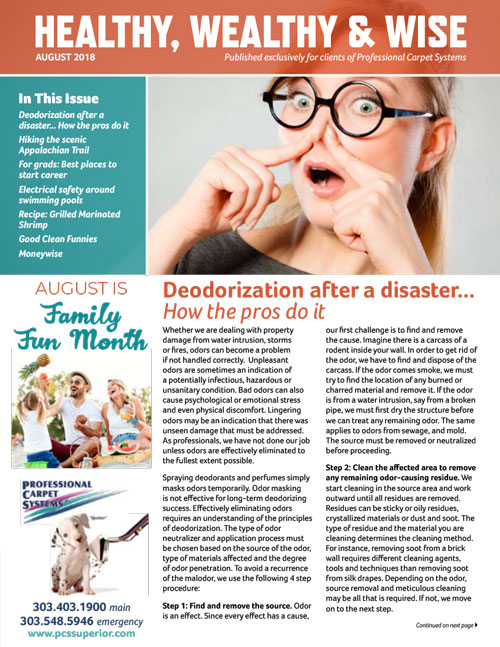

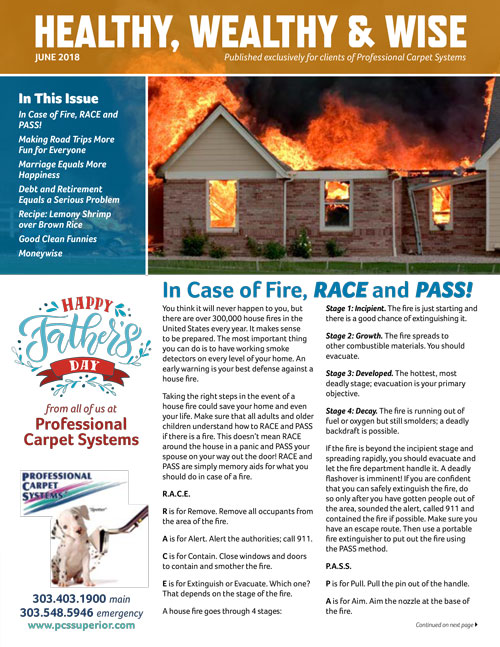

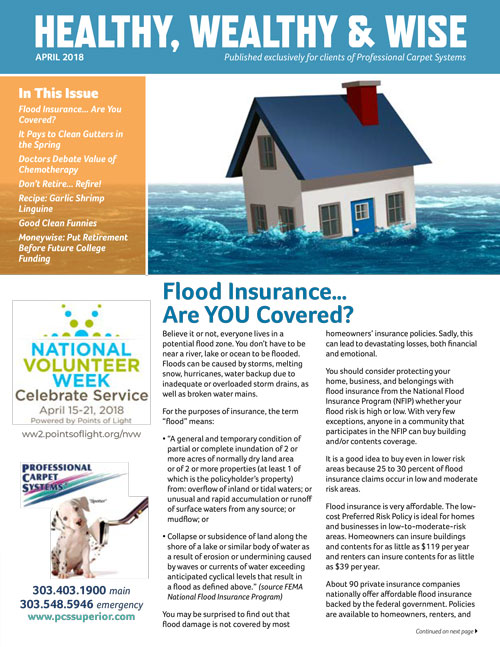


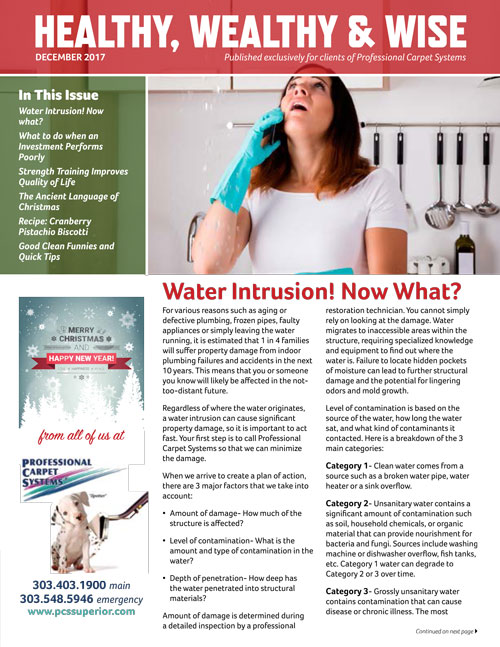 Click Here to See the Newsletter
Click Here to See the Newsletter